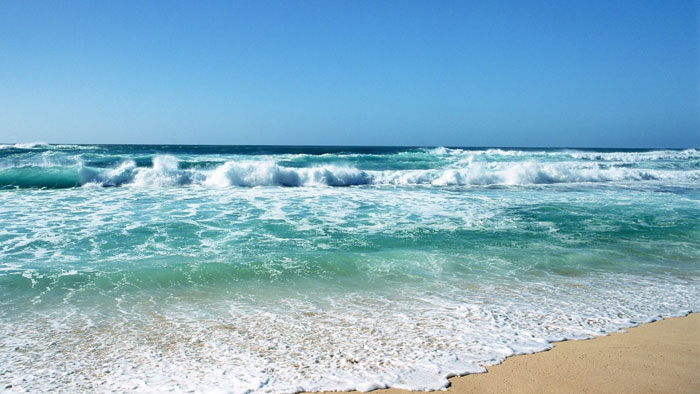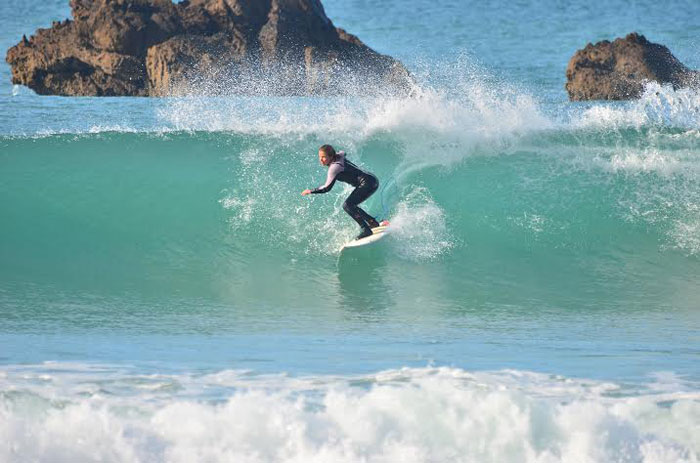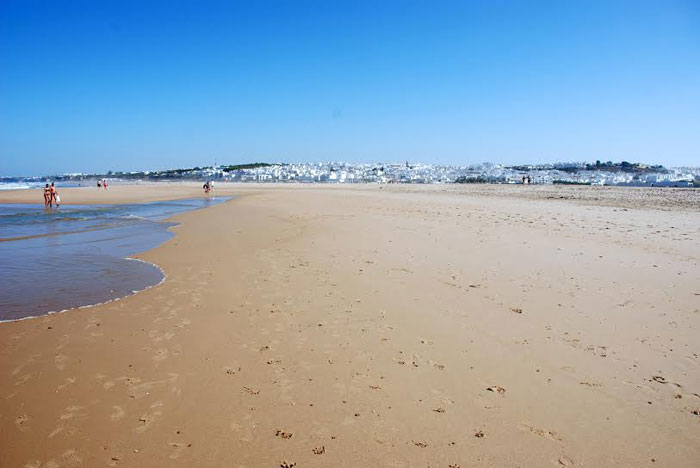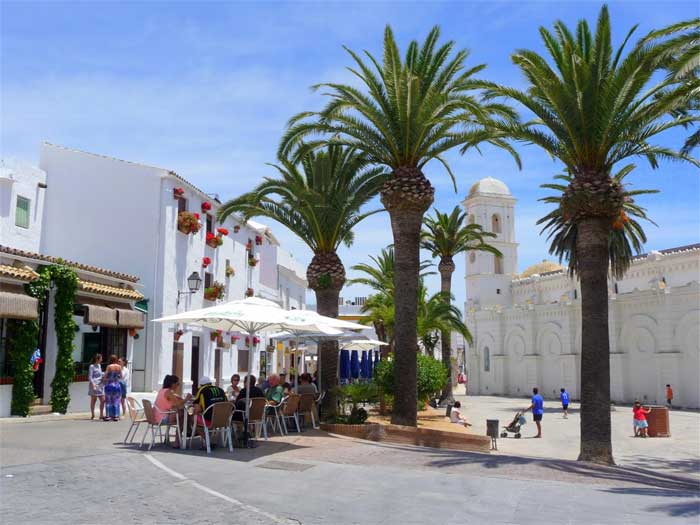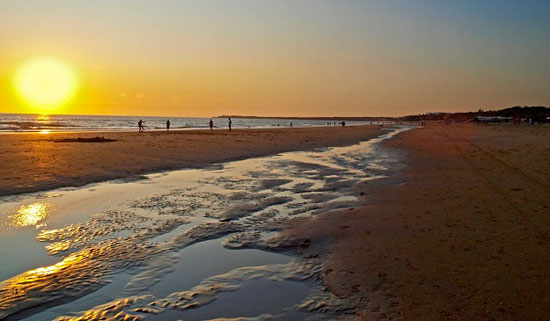 The Costa de la Luz (Andalusia) is a special, unspoilt and undiscovered area in southern Spain. Here on the coast of the Light is Conil de la Frontera.
The Costa de la Luz (Andalusia) is a special, unspoilt and undiscovered area in southern Spain. Here on the coast of the Light is Conil de la Frontera.
The charming white town of Conil located on the Atlantic coast of Andalusia is about 40 km south of the city of Cádiz. It is a typical Andalusian fishing village, with narrow streets and cozy tapas bars. Without high-rise buildings and mass tourism.
The beautiful sandy beaches that stretch for miles are interspersed with green pine forests. North of Conil the beach changes into a steep rocky coast with beautiful sheltered bays.
On the boulevard, typical Spanish houses are interspersed with restaurants and terraces. The village has shops for fresh vegetables, fruit and fish and there is a weekly market on Fridays.
Conil is not a 'typical Spanish' holiday destination. You will not find rows of souvenir shops and prices are not increased for the tourists.
They come back for the friendly and relaxed atmosphere, water sports and above all for the excellent gastronomy as they eat what was taken from the land or fished from the sea that day.
Seville
Seville is a municipality and the capital of the Spanish autonomous region of Andalusia, and of the province of Seville. It is the most important city in southern Spain in terms of culture, politics, economy and art. In 2013, the city had 700,169 inhabitants, and 1,519,639 people live in the agglomeration of Seville.
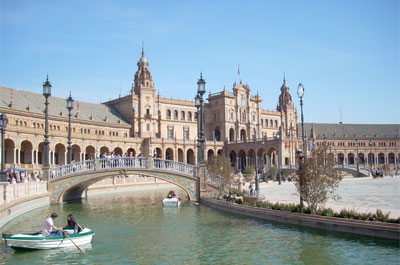 Seville is located on the river Guadalquivir, which is navigable to the city for not too large sea-going vessels and has the largest historical center in Europe, in which the main sights of the city, the cathedral of Seville with the Giralda tower, the Alcázar and the Torre del Oro are located. The Seville neighborhood of Triana is considered the birthplace of the Spanish dance and music style flamenco.
Seville is located on the river Guadalquivir, which is navigable to the city for not too large sea-going vessels and has the largest historical center in Europe, in which the main sights of the city, the cathedral of Seville with the Giralda tower, the Alcázar and the Torre del Oro are located. The Seville neighborhood of Triana is considered the birthplace of the Spanish dance and music style flamenco.
Seville is known for its varied cuisine, the large amount of restaurants, bars and pubs and also for the fact that they have a hot meal twice a day. The Sevillians really take their time for food and like an aperitif and / or tapa beforehand. Stroll through the cozy Bario Santa Cruz and taste the atmosphere of Andalusian life.
Cadiz
The fascinating port city of Cádiz is the oldest inhabited city in Western Europe. The city was founded in 1100 BC. Founded by the Phoenicians and has an eventful history.
Cádiz, the city that smiles:
Perhaps the biggest attraction of Cádiz is the now legendary cheerfulness of the Gaditanos, the inhabitants of the city. Gaditanos are happy and content simply because every day is a new day, and enjoy life to the fullest. Cádiz is la ciudad que sonríe, the city that smiles, and you experience that everywhere in the old town. For example on Plaza de Mina, where people greet each other with kisses and hugs and spontaneously start singing flamenco. Or on the boulevard Duque de Nájera, where young and old can enjoy the cool sea breeze and beautiful sunset in the evening.
Jerez de la Frontera
Jerez is known as the sherry city (“Vino fino” or “Vino de Jerez”). As you walk through the streets, the scent of Sherry penetrates the whitewashed walls of the bodegas.
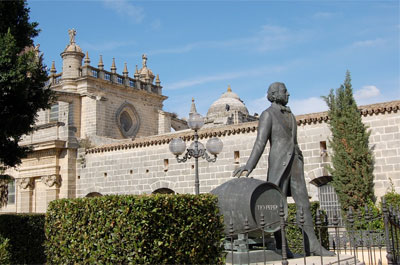 On the walls are the names of the great landowners, such as Pedro Domecq who own large parts of Andalusia around Jerez and who cultivate the land or use it to breed (fighting) bulls and horses.
On the walls are the names of the great landowners, such as Pedro Domecq who own large parts of Andalusia around Jerez and who cultivate the land or use it to breed (fighting) bulls and horses.
Jerez is home to the Horse Riding School “Fundación Real Escuela Andaluza del Arte Ecuestre”, or the “Royal Andalusian School of Equestrian Art”.
This school enjoys a good reputation. In the school horses and riders are trained and shows also take place.
Jerez also has the “Yeguada de la Cartuja”, which carries out similar activities. Once a year in the spring there is the “Feria del Caballo”, a large horse / cattle fair and fair that lasts three days and where prize cattle from all over the world can be viewed and purchased.
Jerez is called the capital of Flamenco. Although all of Andalusia has produced great Flamenco artists, this is where the official academy of Flamenco, the “Centro de Baile Jerez”, is located.

